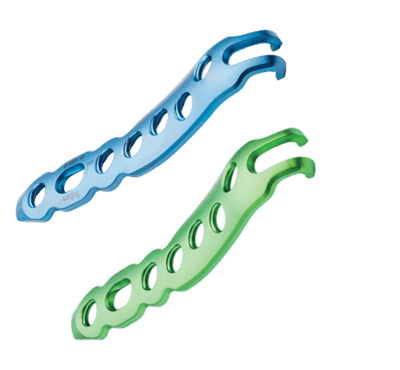
Discover the open MRI imaging center in our clinic. Centrokinetic has a state-of-the-art MRI machine, dedicated to musculoskeletal conditions, in the upper and lower limbs. The MRI machine is open so that people suffering from claustrophobia can do this investigation. The examination duration is, on average, 20 minutes.
Centrokinetic attaches great importance to the entire medical act: investigations necessary for correct diagnosis (ultrasound, MRI), surgery, and postoperative recovery.
Jones fracture occurs in a small area of the fifth metatarsal, which is less vascularized and therefore more prone to consolidation delays or pseudarthrosis (lack of fracture consolidation). The rate of pseudarthrosis is between 15 and 30%.
Jones fracture can be a stress fracture (occurs over time) or an acute fracture (sudden onset of trauma). Jones fractures are caused by overuse, repetitive stress, or trauma. They are less common and more difficult to treat than avulsion fractures.
.png)
.png) |  |  |
Indications for surgery include:
- young patients, very active
- high-performance athletes
- isplaced fractures
There are several surgical techniques, and choosing the right one depends on the characteristics of the fracture: fixation with intramedullary screws, fixation with locked plates and screws.
Surgical management of high-performance athletes minimizes the risk of nonunion and prevents prolonged restriction of physical activity, ensuring a faster return to sport.
Surgical technique
Under spinal anesthesia, an incision of about 3-4 cm is made at the base of the fifth metatarsal, the subcutaneous tissue is dissected, and the fracture focus is highlighted.
It is reduced and fixed either with an intramedullary screw or with a pre-molded plate and screws. The decision depends on the type of fracture, the degree of comminution, the trajectory, the age of the patient, the quality of the bone tissue, and the level of activity.
Postoperatively
After the operation, the patient remains hospitalized for 1 day. He will receive pain medication and antibiotics during his hospitalization. The operated limb is immobilized in a plaster splint, and the patient is advised not to make ankle movements, 60 days after the intervention. When walking, is necessary to use crutches, even if the chosen intervention was minimally invasive.
Patients will wear a compressive bandage on the foot for 5 days. Patients can return to family and professional activities quickly, up to 3-4 weeks, if they have office work, and 12 weeks, if they have fieldwork.
At home
Although recovery after this operation is much faster than a classic intervention, it will still take a few weeks for you to fully recover the operated joint. You should expect pain and discomfort for at least a week postoperatively. You can use a special ice pack, which will reduce the pain and inflammation. You must be careful not to lean on the operated area in the first weeks because the pain and discomfort can worsen. You can take a bath, but without wetting the bandage and incisions. The threads are suppressed at 14 days postoperatively. At 6 weeks postoperatively, an MRI is necessary to see how the tendon suture heals. Driving is allowed after 8 weeks, and hard physical work after 10-12 weeks.
Physical therapy plays a very important role in the rehabilitation program, and the exercises must be followed by a physical therapist until the end of the recovery period.
It is very important to follow the recovery program strictly and seriously for the surgery to be a success. Our medical team works on average with the patient after this intervention, 12-16 weeks until complete recovery of the operated area.
Following any surgery, medical recovery plays an essential role in the social, professional, and family reintegration of the patient. Because we pursue the optimal outcome for each patient entering the clinic, recovery medicine from Centrokinetic is based on a team of experienced physicians and physical therapists and standardized medical protocols.
MAKE AN APPOINTMENT
FOR AN EXAMINATION
See here how you can make an appointment and the location of our clinics.
MAKE AN APPOINTMENT



































































































































